The first lecture sets the tone for the semester. This is especially important for CS1, where students come in with all kinds of expectations and prejudices. For me, the goal of the first lecture is to assure all students that they belong in the course, regardless of their background and goals, and to situate computer science in the broader societal context. Instead of going over the syllabus, I prefer to spend the hour setting up the relationship I expect students to have with CS.
I want to share an annotated walkthrough of the first lecture of my CS1 course, from the Fall 2017 semester. (The complete PDF slides are on Github.) Like other liberal arts colleges, only a minority of students in CS1 are majors. To engage the students whose interests lie elsewhere, I focused the lecture on the “cool” applications of CS.

After a brief introduction of myself, I direct the class into a short discussion: what is computer science? Aside from clearing up misconceptions, such as equating computer science with programming, this (think-)pair-share activity also gets students talking to each other. Many of my lectures includes discussions, and building a community early encourages students to help each other in the labs, projects, and beyond.
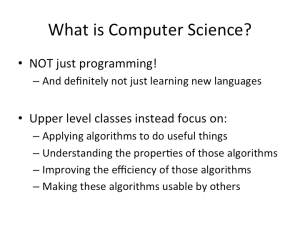
With a rough definition of computer science, the bulk of the lecture describes three reasons why students should study CS. I prefer to address the most banal reason first: that computer scientists often have high-paying jobs. Since this is likely one of the first answers anyway, I prefer to set it aside so it won’t dominate the remaining conversation.

With money out of the way, I present the second reason to study CS: because it touches a broad swath of society. Recalling the goal of making everyone feel like they belong, I deliberately list colleagues whose work include or use computational methods.
- Amanda Zellmer in Biology models the effects of climate change on local species, while Janet Scheel in Physics simulates turbulent convection flows in high-temperature fluids.

- Caroline Heldman in Politics used machine learning to detect gender bias in film.
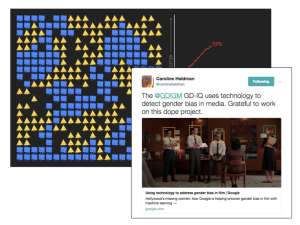
- Alison de Fren in Media Arts and Culture explores the portrayal of technology in popular media.
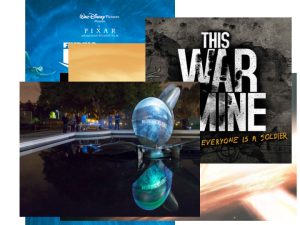
[I just noticed that all the colleagues I named are women.]
These faculty were deliberately chosen to reflect not just the physical sciences, but also the social sciences and the humanities. The intention is for students to connect computer science with whatever other interests they may have. These slides also serve as a preview for assignments on big data social science and on digital arts and media.
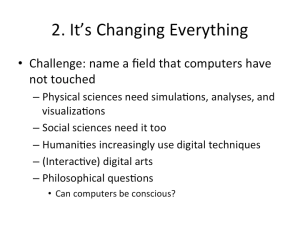
I make a guessing game out of these reasons for studying CS, and so far only one student has guessed the final one: because it’s fun. This section contains an assortment of my own experiences with CS, with a focus on hobby projects that have helped me in my personal life.
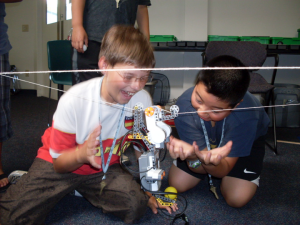
The centerpiece of this section is the (true!) story of how I used constrained optimization to assign 19 members of the Outdoor Club into 3 vans for spring break back in 2009. I did this by considering the social network formed by relationships and friendships, and how different assignments would split people apart.

This example has a deeper point beyond how CS can be used to solve real-world problems. Once students understand how I solved the seating problem, I then ask them: Why do relationships have a -4 penalty, but friendships only have a -2 penalty? The answer is that these numbers are arbitrary, but different numbers will have a direct impact on how enjoyable the 24-hour car ride is.

This discussion transitions to my last section. I present some summary statistics of the class, and every time I have rough gender parity with majors from across the college.
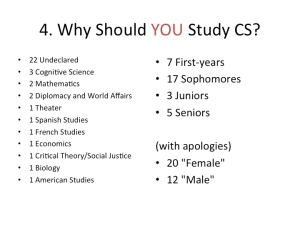
Pointing out the relative diversity of the class, I then list recent articles on how technology has negatively impacted society. This is how I end the lecture: with a somber note that CS needs their perspective as much as they might need CS for their career.

If there’s a takeaway for this post, it’s that the course policies can wait – the first lecture is a singular opportunity to acculturate students to a broader view of CS. I want students to feel that CS can advance their interests and that they are welcome in CS no matter their background. This lecture is designed to get students excited and motivated about computer science – and if I may say so, it has worked pretty well so far.